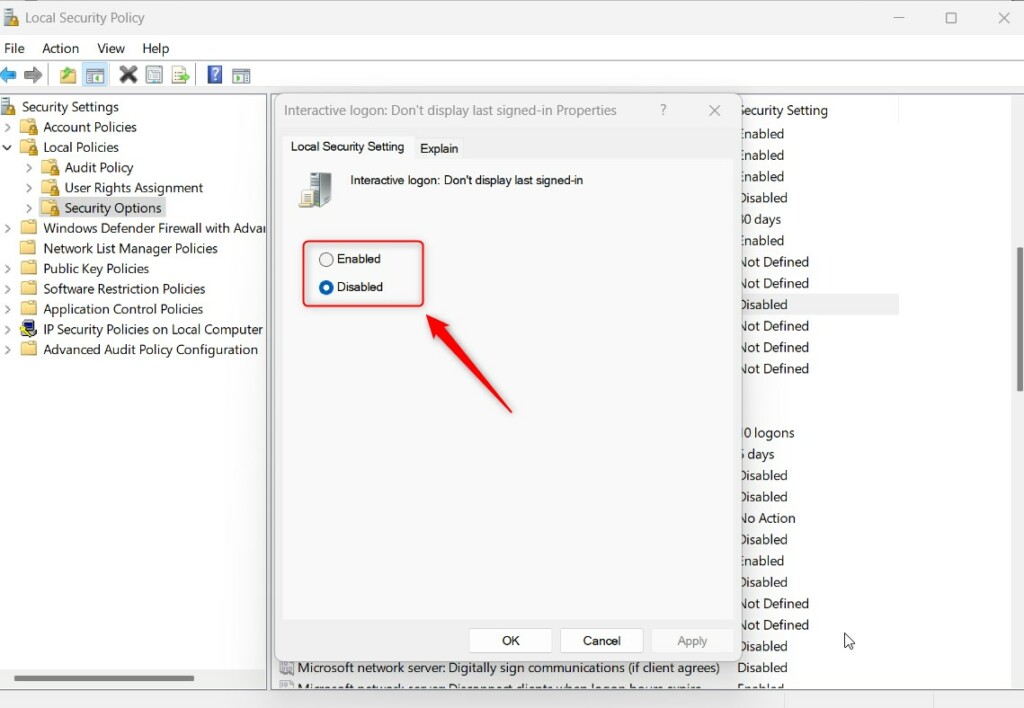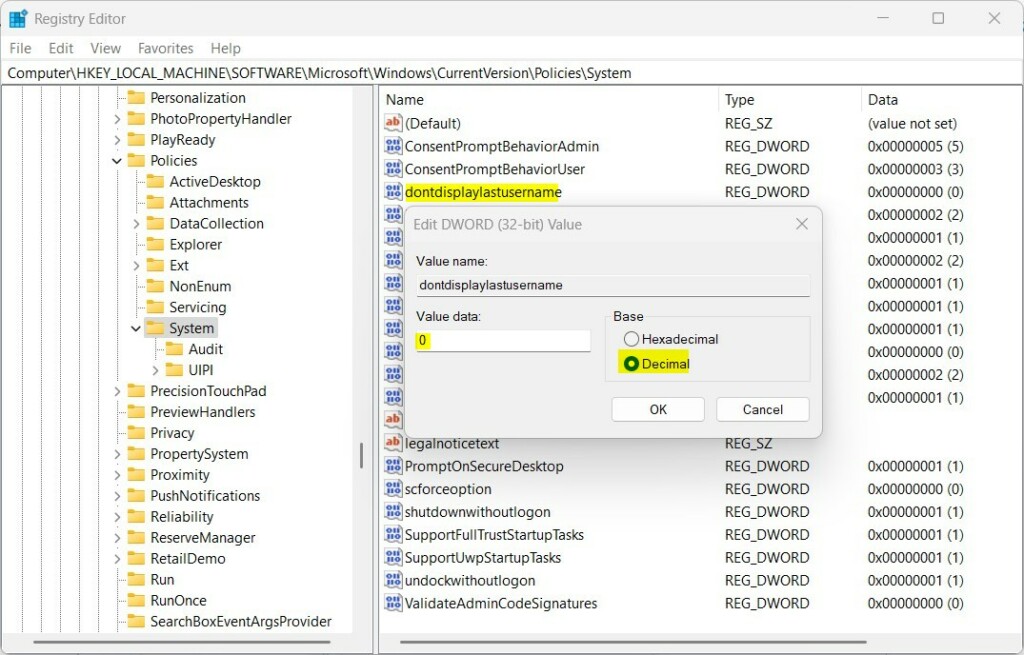This article explains how to turn “Do not display last sign-in” or “Do not display last user name” on the sign-in screen in Windows 11.
The lock screen is the screen or curtain you see when you turn on your computer before the sign-in screen. It is also displayed once your computer is locked after you step away or press the Windows key + L.
When you dismiss the lock screen, the sign-in screen will appear and show all users at the bottom left corner. You can select a user from the list to sign into Windows.
By default, when a user logs in to Windows, the user’s full name, as well as the user’s sign-in tile, is displayed. This behavior is the same when the Switch user feature is used.
Windows has a security setting called “Interactive logon: Don’t display last signed-in,” previously “Interactive logon:Do not display last user name,” that controls whether to display the full name of the last user who signed in on the sign-in screen.
When you enable the policy, the full name of the last user to successfully sign in isn’t displayed on the Secure Desktop, nor is the user’s sign-in tile displayed.
Hide or show the full name of the last user who signed in
As described above, users can use the “Interactive logon: Don’t display last signed-in,” previously “Interactive logon:Do not display last user name” policy to control whether to show or hide the full name of the last user who signed in to Windows.
Here’s how to do it.
First, open the Local Security Policy Editor.
Then expand the following folders Local Policies -> Security Options.
Local Policies -> Security Options
Next, click on the Security Options folder on the left panel, and double-click the setting on the right called “Interactive logon: Don’t display last signed-in” to open.

When the setting window opens, select one of the options:
- Enabled – Hide last signed-in
- Disabled – Display last signed-in.

Save your settings and restart your computer for the changes to apply.
Enable or Disable “Don’t display last signed-in” via Windows Registry Editor
Yet another way to turn on or off “Don’t display last signed-in” in the Windows Security app is to use the Windows Registry Editor.
If you can’t open the Local Security Policy Editor, use the Windows Registry editor instead.
Open the Windows Registry, and navigate to the two folder keys below.
HKEY_LOCAL_MACHINE\SOFTWARE\Microsoft\Windows\CurrentVersion\Policies\System
If you don’t see the System folder key, right-click on the CurrentVersion key, then create the subkey (System) folders.

Right-click the System folder key’s right pane and select New -> DWORD (32-bit) Value. Type a new key named dontdisplaylastusername.
Double-click the new key item name (dontdisplaylastusername) and make sure the Base option is Decimal, and then update the Value data:
- To hide the full name of the last signed-in user, type 1.
- To always show the full name of the last signed-in user, delete the name dontdisplaylastusername created above.

Save your changes and restart your computer.
That should do it!
Reference:
Conclusion:
- In conclusion, this article provided detailed explanations on how to display or hide the full name of the last signed-in user on the sign-in screen in Windows 11.
- It covered the steps to enable or disable the “Don’t display last signed-in” feature using the Local Security Policy Editor and the Windows Registry Editor.
- Additionally, it emphasized the importance of the security setting and provided references for further information.
- Please utilize the comments section below if you require further clarification or wish to contribute.
- Understanding and utilizing these instructions can ensure enhanced security and privacy for Windows 11 users.

Leave a Reply